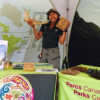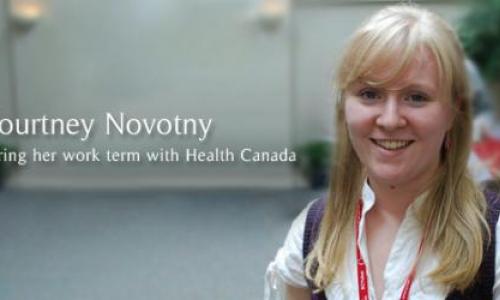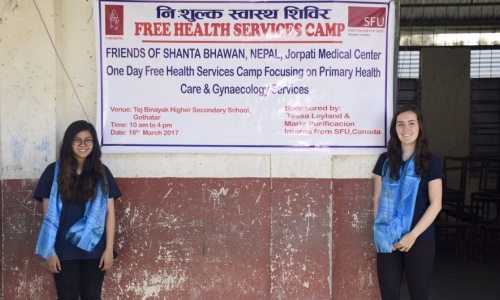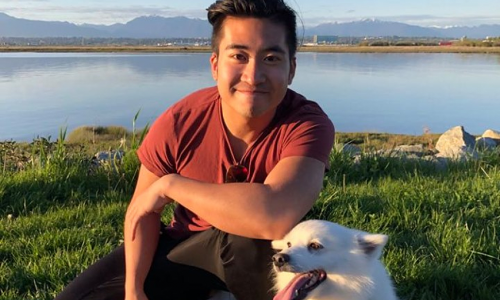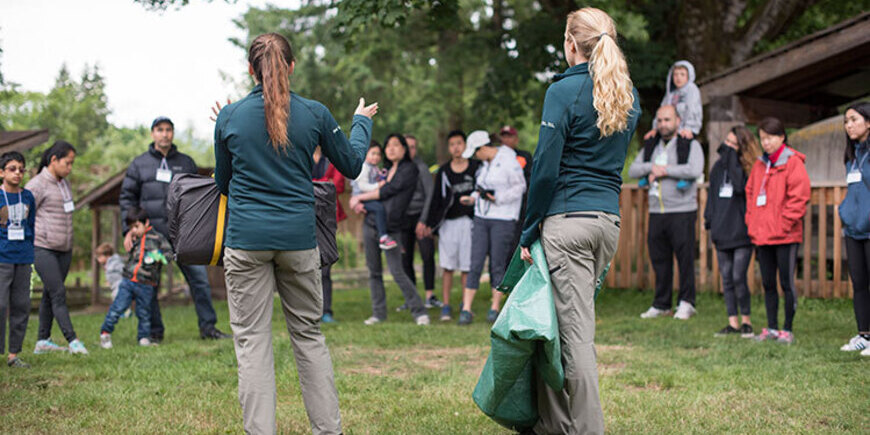
Summer 2017, was the summer where I packed up all my bags and moved across the country to work for Parks Canada as a member of the Toronto Urban Outreach Team.
If I could pick one word to describe my experience it would have to be “wild”. As a member of the Urban Outreach Team, my job was to engage and inspire the general public about the different National Parks and Historic sites. Parks Canada believes in thoroughly training their employees and since the team would be engaging the public about National Parks and Historic sites, we were sent on various trips to experience the sites we would be educating the public on. Here is a summary of the Parks Canada places that I experienced.
The Thousand Islands camp experience was like a very large family reunion except you have no idea who anyone is. To elaborate, this trip involved the Toronto, Gatineau, and Montreal Urban Outreach teams all camping together on a very remote and tiny island. Did I mention this island is only accessible via kayak? Parks Canada provided four training sessions on topics such as different audience types and finding your interpretive voice, that would prepare us to educate the public about various parks and historic sites near Toronto.
Working for Parks Canada provided the perfect balance between work and play. The training that was provided gave me the confidence to effectively engage and communicate with the public. As for the play aspect, outside of training hours we were free to kayak, socialize and network with the other Urban Outreach Team members.
Our second trip as a team covered another side of Parks Canada, the national historic sites. A short road trip away, my team and I visited two National Historic sites, HMCS Haida, and Fort George. The first site we visited was the HMCS Haida – an old retired warship. Our visit here involved exploring the ship which served in World War II as well as the Korean war. We even participated in a little photoshoot for one of their programs called “Thirsty Thursdays”. To elaborate, Thirsty Thursdays involves guests attending a whiskey tasting before attempting to do sailor chores such as lifting a barrel over your head.
Later in the day we drove further out to Niagra by the Lake to visit Fort George. At this site we were welcomed by knowledgeable interpreters who took us on a tour of the site where we learned about hardships the soldiers faced when they enlisted. However, the best part was when we got to shoot our own musket!
My adventure at these two amazing historic sites has piqued my interest in history. It’s taught me that history isn’t meant to be only read in books, but also meant to be experienced.
Our last and final trip was to experience one of the most popular parks in Ontario: the Bruce Peninsula. Bruce Peninsula has become popular in part due to its rise in popularity on Instagram. Therefore, it was important to my manager that we visited Bruce Peninsula because we were guaranteed to be bombarded with questions about this national park. Moreover, she wanted us to be able to provide a personal and genuine experience that we could share with the people who were interested in Bruce Peninsula.
Since, we were there to experience Bruce Peninsula and to learn about what it has to offer to the public, we went on various hikes throughout the area. It was quite an adventure, we were bounding and leaping across rocks and crawling down strange and questionable holes in the ground. Apart from the natural beauty found in the hikes, there are many caves to visit nearby that have fossils from the ancient ocean that once covered the area. However, the best part of this trip is that my 13 team members managed to fit in one very large tent.
Eventually the end of the Bruce Peninsula trip arrived. In the two days I spent in Bruce, I had fallen in love with nature as well as developed a stronger bond with my team.
Members of the Toronto Urban Outreach Team have the responsibility of being the ‘faces’ of Parks Canada, since we are the people that first interact with the public regarding Parks Canada. The team attends different events such as Pride and makes appearances at different partnership sites such as the Toronto Zoo. However, this year is Canada 150 and the Toronto Urban Outreach Team has been the biggest it’s ever been. Therefore, our team of fourteen students was split into two groups – the events team and the partnership team.
I was fortunate to experience both teams. My experience with the events team included everything from handing out free spray on tattoos at Toronto’s annual Pride Parade to handing out general Parks Canada information at the Royal Ontario Museum. As a Co-op student from the other side of Canada, the biggest perk of working an event is that you are usually in the heart of Toronto. This exposed me to the variety of people from local “Torontonians”, to tourists from all over the world. Likewise, the unpredictable nature of events in downtown Toronto proves that no matter how hard you plan and prepare, there’s still a chance that something might go wrong. With that being said, this job taught me how to be flexible and adapt to any situation to make the best of it.
In comparison, working with the partnership team brought me to the Toronto Zoo and Ripley’s Aquarium. In addition to providing general Parks Canada information, at these sites we engage the public about the collaborative conservation efforts Parks Canada has with its partnership sites to protect certain species.
For instance, my favorite animal to educate people about is the Bison. My interaction with a guest starts off with a few Bison facts, did you know that they are the largest land roaming mammals in North America. We were provided with various
props to use as interpretation tools, but my favorite would have to be the Bison Jaw, since it really shows guests how large they can be. After all the fun facts, I proceed to tell the story about the collaboration between the Toronto zoo and Parks Canada were able to breed bison to be released into Banff National Park where they were once extirpated.
Ultimately, working on the Parks Canada Toronto Urban outreach team exposed me to places that I would never have been given the opportunity to visit, as well as a variety of different audience types. I can confidently say that this experience has enhanced my communication skills and given me the confidence to interact with any person.
In addition to working at cool events and partnership sites, each member on our team has their own special project. The special projects can vary from program development, to volunteer coordinating. I was chosen to be a part of the program development team for the partnership team with two other students. Our responsibilities included taking current programming and seeing how it can be improved upon, as well as creating new and interesting programs.
With three sets of new eyes, we sought to create an interactive activity that was educational and fun. Oddly enough, inspiration for our program appeared during a grocery store run at Walmart when I stumbled upon a box of giant Jenga. I told my team about my find and we were ecstatic as we discussed programming that would use the giant Jenga. Thus, Bio Blocks was born.
Bio Blocks is an interactive game that uses giant jenga to represent the delicate balance that can be found in ecosystems. My team and I created two slightly different versions of this game, one was specific for the Ripley’s Aquarium and the Toronto Zoo.
The launch of Bio Blocks happened during my team’s first event
World Oceans Day at Ripley’s Aquarium. Moreover, this is the first year that Parks Canada has partnered up with Ripley’s, so everyone was buzzing with excitement. To play the Ripley’s version of bio blocks the player would pull out a block with a marine animal written on top, then they would flip it and see a threat to that marine animal written on the other side. Finally, they would try to balance the block on the top of the tower with the threat side facing upwards. The key message of this game is to highlight different Canadian marine species and their threats. However, our enthusiastic attitudes and fun games didn’t generate the amount of contacts we had hoped. This was due to many factors such as location inside the aquarium, and the age range of the participants was too young to understand the concept of a collapsing ecosystem. It was really hard to not be disappointed, but this was a learning experience and gave us ideas as to how we can improve upon our program.
As a result, the Toronto Zoo version of Bio blocks as a much more simplified version. We changed up the species that would be found on the blocks when the players would pull them out to match some of the species that the Toronto Zoo and Parks Canada help protect. Furthermore, on the other side of the blocks rather than having a threat of the animal we changed it to a National Park that they could be found in. A giant map inside our tents allowed us to visually show the players how far or near some of the animals can be found. This version of Bio Blocks was much simpler and it resonated better with the participants.
It isn’t everyday that you are given the opportunity to create something that can make an impact. Bio Blocks has been a learning experience since it gave me an opportunity to develop a program that will continue to be used by future urban outreach team memebers.
Beyond the Blog
-
To learn more about opportunities like Francesca's visit the Environmental Science Co-op homepage.









